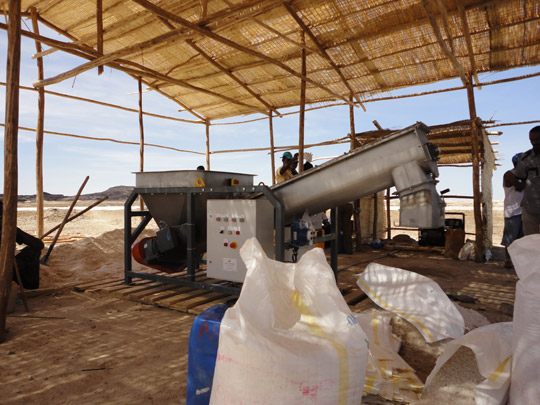Inauguration of new salt iodizing machines in Afdera

Iodine deficiency has long been recognised as a major public health problem in Ethiopia, with estimates of three quarters of the population suffering from varying degrees of deficiency. Over the past decade, there has been keen interest on the part of the Government of Ethiopia to exploit and develop a domestic salt industry, and establish a national universal salt iodization (USI) programme.
A major breakthrough in the Ethiopia USI programme was realised in February 2011, with the passing of legislation by the Council of Ministers. As a result, there has been a call to rapidly expand the iodization capacity though the combined efforts of the Government, the salt industry and external partners.
Afdera woreda is one of the key producers of salt in the country. It is located in Afar Regional state, about 800 km from Addis Ababa. The name of the woreda originates from the hyper-saline lake Afdera and means ‘inaccessible’ in the local language. Indeed the area, 100- 110 m below sea level, has a very inhospitable climate reaching peak temperatures of over 50⁰C between May and August.
Salt producers in the local sites traditionally use knapsacks manual sprayers to iodize salt. This system is not optimal as it leads to poor quality salt due to lack of uniformity in its iodine content.
Since 2013 Irish Aid has been working with the Global Alliance for Improved Nutrition (GAIN) to change the current iodization practice in Afdera and to demonstrate how effective technologies and systems of production can improve quality. The project came to an end in February 2015, culminating in the delivery of four new Davey iodization machines to the Afdera salt producers. These machines are designed to perform well under harsh climate and have the capacity of iodizing 40 tons of salt per hour (about 6,000 tons on monthly basis). The GAIN support included capacity building of salt producers in controlling the quality of the salt iodization process and ensuring ownership by the Salt Producers Association.
The four new machines were inaugurated during a ceremony on the 7th and 8th of February. The event brought together salt producers, representatives of the local woreda administration, regional Health Bureau, Parliament members and other stakeholders to discuss the current gaps in the salt production in Afdera and collaborate in the way forward.
To find out more about the salt mines in Afdera and the life of its inhabitants read “Going Back to the Salt Mines”, an interesting article recently published by the Ethiopian newspaper The Reporter (pg. 16 link: http://thereporterethiopia.com/issues/Reporter-Issue-962.pdf ).

